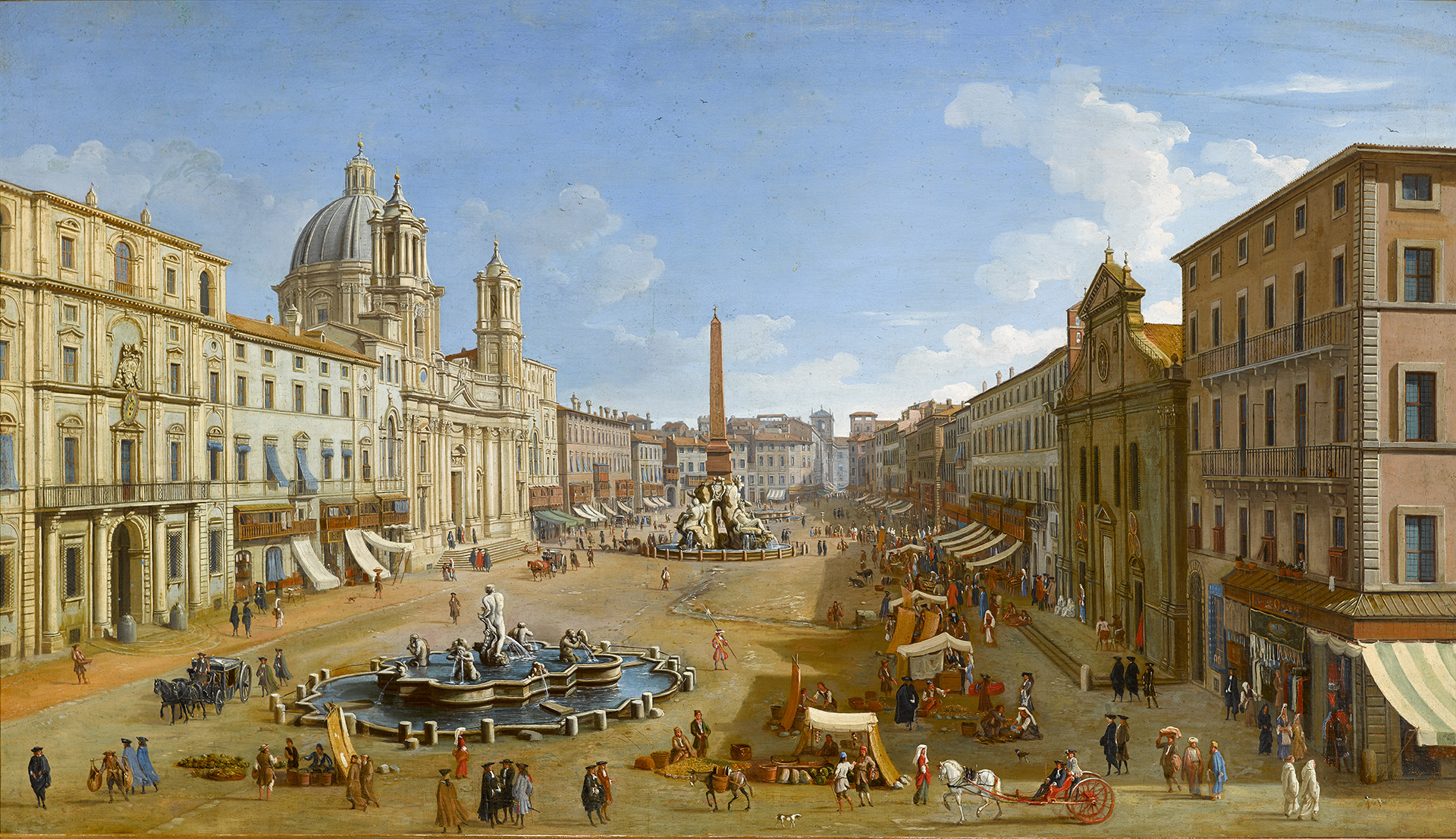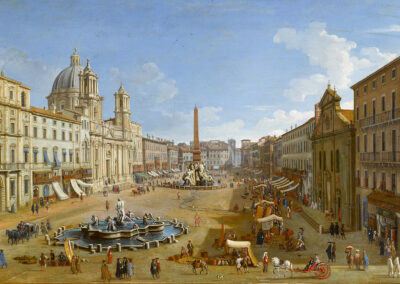Within the iconography of Rome, the subject of the Piazza Navona is one of the most appreciated and it is not in vain that this is one of the nine surviving versions of Vanvitelli's views of the square. All of them are based on a preparatory drawing almost a metre and a half wide taken from the Palazzo Lancellotti and now in the Biblioteca Nazionale in Rome, a drawing that has helped Fabio Benzi to understand Vanvitelli's working method and to demonstrate the skill with which the camera obscura was already being used at the end of the 17th century. For the details of some elements, Vanvitelli made partial drawings, such as those preserved for this view of Bernini's fountain and the façade of Sant'Aganese (G. Briganti 1996, D 43).
When he made this first drawing, just over two decades ago, with Bernini's fountain and Borromini's façade of Sant'Agnese, he had completed the redesign and ornamentation of this square, the largest in the city after St. Peter's, and famous at the time for its market and its naumachia, which took advantage of its concave bottom to fill it with water.
This view appears under number 176 in the inventory of the 10th Duke of Medinaceli with the following description: "Another painting by Gasparo Vambitel of the Piazza Navona...".


